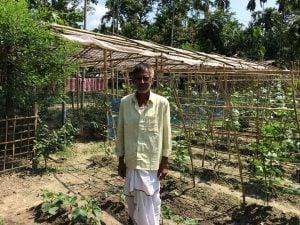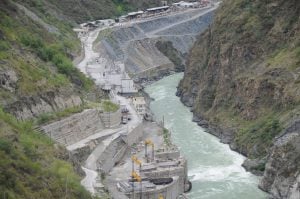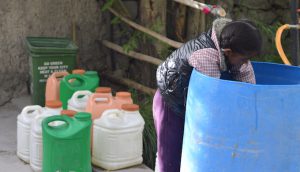The Indus River has immense hydropower potential which has mostly remained untapped. The geographic location of the state of Jammu and Kashmir gives it a unique advantage to harness hydropower from the three major rivers of the Indus.
Almost 100% of the state’s installed capacity comes from hydropower. This is less than 15% of the estimated 20,000 MW hydropower potential of the state and therefore there is huge scope for harnessing the remaining 85% of the hydropower potential. The state’s energy demand has increased over the last five years at an annual rate of about 5% to 6%. Every year it faces a power deficit in the range of 20% and 25% which is much higher than the national average of 3%.
The primary reason why the state has been unable to use its water resources for bridging its energy deficit is lack of finances. Increase in joint ventures and public-private partnerships can give the required momentum for streaming in the benefits of hydropower generation in the state. Not only will this directly improve the state’s power deficit, it will also have wider repercussions on socio-economic development.
The Indus Waters Treaty
Any water infrastructure development on the Indus River in the state is guided by the Indus Waters Treaty signed between India and Pakistan in 1960 with the World Bank as the guarantor. The treaty reserves the western rivers; the Jhelum, Chenab, and Indus for Pakistan except for specific use by India for various purposes including irrigation, domestic use, run-of-river hydropower generation and other non-consumptive uses subject to the conditions of design, water storage and other features clearly set out in the treaty.
The two countries have disagreed on the implementation of some of these projects. To address such concerns, there is a transparent and vibrant dispute resolution mechanism in the treaty. For instance, recently when Pakistan objected to the hydropower generation on the western rivers by India, particularly Baghliar and Kishanganga projects, the matter was resolved as per the provisions of the treaty. Recently, a few important concerns about sharing of Indus waters between the two countries have also come to the fore and these include climate change impacts, melting of glaciers, groundwater exploitation, water quality, and minimum environmental flows. The two countries share these common concerns but are addressing them on their own within their territorial boundaries. There is a need for a joint mechanism to address them in order to optimise the impact of their mitigation plans.
Benefits of small hydropower projects
More importantly, given the environmental vulnerability and economic constraints of the region, harnessing the entire identified hydro potential by promoting large hydro projects may not be a good strategy. The state has a huge potential for Small Hydro Projects (SHP) in the category of projects up to 25 MW, a potential of more than 1500 MW, but the achievement with respect to harnessing it has been particularly dismal.
Small, micro or mini hydro projects are more environmentally friendly compared to large and medium hydel projects as they have minimal reservoir requirements and civil construction work. Nowadays, even Financial Institutions (FIs) are not very eager to finance large and medium hydroelectric projects for a host of reasons especially due to the long gestation periods and slow return on heavy initial capital investment. As a result, until now only 3263.46 MW has been exploited in the state.
SHP, mini and micro-hydel projects have tremendous potential for electricity generation in the upper Indus basin. Unlike, large hydro projects, SHP projects do not have a long gestation period so can be quickly used to meet the power demand. However, the efforts for promoting SHP, mini and micro-hydel projects in the basin have not borne the desired results till date, in the absence of any policy guidelines for expeditious processing of mandatory clearances from various state agencies. Power development agencies should assume a role of active facilitator for the promoters and set up a single window system for securing timely clearances. Similarly, bottom-up community driven projects will be a better option for harnessing water resources in this sector.
Learning from successes
A report on best practices in renewable energy compiled by Ministry of Environment and Forest (MNRE) presents the case of Jakhana SHP initiative of UREDA (Uttarakhand Renewable Energy Development Agency), as a unique community managed SHP. The project was planned and constructed with active participation of local community through the formation of a Village Energy Committee. This committee manages the regular maintenance of the SHP. Similarly, in Pakistan there have been some notable initiatives in setting up community based SHPs. The Aga Khan Rural Support Programme and the Sarhad Rural Support Programme have championed in increasing energy access in remote rural villages of northern Pakistan through mini hydel projects, with the support from local communities. The local communities contribute their time and labour for setting up of these projects which creates a sense of ownership and ensures sustainability of the projects. It will be useful to learn from the best practices and success stories of SHP from both sides of the border for optimal harnessing of the green and renewable energy resources in the Indus basin.
To promote hydropower in Jammu and Kashmir, last year the state came out with a Small Hydro Policy. The objective of this policy is to lay down a framework for the optimum harnessing of hydropower resources of the state and to promote entrepreneurship and private sector investment so that small hydropower can be promoted as an attractive economic enterprise. The policy offers several fiscal and financial incentives for investors, like income tax exemption and entry tax or sales tax exemption on machinery required for initial installation or maintenance of these projects. In addition, recently the Department of Industrial Policy & Promotion also unveiled a fresh set of incentives to encourage new industrial units and existing industrial units involved in hydel power generation for a period up to 2022.
While considering the funding proposals, the financial institutions, besides other viability factors, satisfy themselves on their concerns about the power purchase agreements. At 30% commitment of power purchase under the SHP policy, it will not be difficult for independent power projects to satisfy financial institutions on their loan repayment capacity. In addition, there is also scope for additional profits to be derived from the Clean Development Mechanism, the UN body that promotes emission-reduction projects in developing countries. All these efforts will enable investors to loosen their purse strings. In future, one can definitely expect a high tide for hydropower development with a focus on small hydro projects in the state of Jammu and Kashmir.
The views expressed in this article are personal and do not reflect the views of the organisations they represent.
![<p>Unlike large hydropower projects, micro hydel projects have relatively little impact on their surroundings [image by: Zofeen T. Ebrahim]</p>](https://dialogue.earth/content/uploads/2018/07/IMG_8508-e1532678135996.jpg)

![Interview with Badi community members in Ramaghat village, Dailekh [image by: Diana Suhardiman]](https://dialogue.earth/content/uploads/2018/08/1.interview-in-Badi-300x225.jpg)





